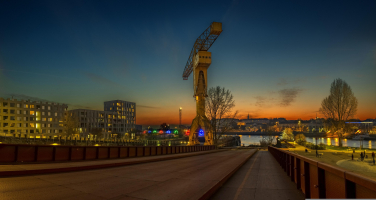Use case: Public lighting
The right light: when it's right, as it should be, where it should be
Lighting represents 20 to 30% of the energy consumption costs of the territories.
With the energy crisis we are going through, we see that there are very important issues at stake in lighting management. It is therefore necessary to manage the electricity consumption of public lighting as carefully as possible.
The question is: How can we combine a stronger need for energy savings with a long-term vision and a value-added service?
Technologies are increasingly helping us to achieve the objectives of fair lighting: the event of LEDs, electronic management, adaptation of photometric levels according to use with presence, hydrometric and wind sensors can help to optimise the operation of the lighting without going as far as cutting it off.
Nantes Métropole and its public lighting
Nantes Métropole has 2000 electrical cabinets and 95,000 light points.The experiment underway in 2022 follows a call for projects launched by GRDF for Nantes Métropole and is linked with Biyotee to propose public lighting solutions. Biyotee is a company who designs and develops remote management solutions for public lighting that are adapted to the needs of local authorities.The aim was to say: How can I use an existing network in my territory to decarbonise my territory? How am I going to reuse existing networks?
Biyotee started to develop a box with competing technology but is now in the process of converting to the Wize technology. The call for projects offered the opportunity to explore the potential of Wize, which has other assets than the previously selected solutions: a very important signal depth for certain installations and the fact that it is open source. Biyotee offers a solution for controlling public lighting that is currently being full-scale tested as part of Nantes Métropole's Nantes City Lab scheme.
Biyotee relies on existing networks
The solution proposed by Biyotee is simple and effective: supervise public lighting using sensors and information. With the Wize network, access is simple: specifications are open source, hardware is also under an open source license and allows great freedom from proprietary technologies. Wize is very accessible. The technology allows developers to make mock-ups, prototypes with development cards in a fairly easy way.
For Biyotee, "We have started an interesting piece of work with the Wize Alliance: use their protocol to put a layer to create applications such as for lighting." The product will be operational on GRDF's operated network at the end of the second quarter of 2023.
To better understand the project,
- check the roundtable done while the Innopolis trade show in September 2022 "The Wize protocol: the future of connected objects".
A large number of local authorities are now looking to integrate this type of technology, opening up a mass use case for Wize outside of water and gas.
